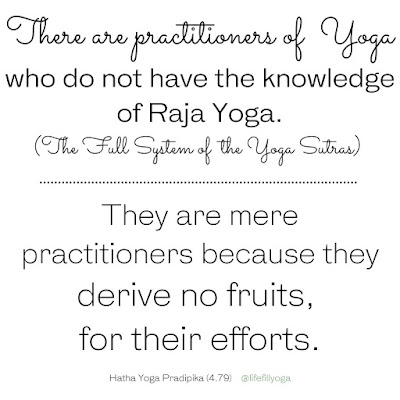SaucaPurity of Body and Mind
Yoga Philosophy/ Yoga Lifestyle
Yama/Niyama (Ways of Life)
Śauca (शौच) refers to “purity of body, mind and thought”. 1 It is often translated as cleanliness, but we will see it is much more than a clean space or even clean body.
Sauca is the first of the 5 Niyama (Self-Care, Self-Practices) in the Yoga Sutras and two verses are dedicated to it. In the Hatha Yoga Pradipika there are 10 Niyama and in the Yoga Sutras there are 5. Read more about them here .
The first verse on Sauca or Saucha is in Yoga Sutra 2.40 says:
"Sauchat sva-anga jugupsa paraih asamsargah" or
A possible and typical translation might be something like:
"Through cleanliness and purification of body and mind (saucha), one develops an attitude of distancing, or disinterest towards one's own body, and avoids contact with the bodies of others."
sva-anga -- one's self, one's own, one's body, could also be ego (sva = one's; anga = limbs)
jugupsa-- aversion, disgust, disinterest, protect
paraih-- and with that of others
asamsargah -- non- contact, non-association
"The result of sauca is that we become less obsessed with the body as an object, and more concerned about it as our only vehicle to experience life."2
- Purification, cleanliness, brightness, correcting of the subtle mental essence (shuddhi sattva). True(Sat) Self See Satya
- Pleasantness, goodness, gladness, high-mindedness, cheerfulness, clarity of the Mind, (saumanasya). Mind (mana)
- One-pointedness with intentness. One (eka) point (gra)
- Conquest, Triump, Victory, or mastery over the senses. The senses, belonging to the Perceiver (indriya). Triumph, victory -- as in Ujjayi Breath(jaya). Tapas also mentions Indriya and Shuddhi
- Fitness/readiness/prepared for (yogyatvani) Self-realization (atma-darshana)"
Sattva is the True Self. It is a state of mind that is balanced and tranquil. Hatha and Raja Yoga seek to draw the mind to its natural state of balance, tranquility, and clarity. The goal is healing and transforming the mind. |
|---|
- Nadis -- energy channels
- Chakras -- energy wheels
- Prana -- energy flow
- Excessive Doshas -- mind-body types
- Asana -- Physical Practices
- Mitahara -- Pure Food
- ShatKarma -- Purification Rituals
- Pranayama -- Breath Practices
- Mudra -- Energy Seals
- Bandha -- Energy Locks
- Mantras -- Mind Delivering
- Samadhi -- Absoprtion / Meditation
- kama -- sensual desire
- krodha -- anger
- moha -- infatuation
- mada -- arrogance/pride
- matsyara-- envy
- Pleasantness, goodness, gladness, high-mindedness, cheerfulness, clarity of the Mind
- One-pointedness focus
- Mastery over our senses
- and the ability to know our balanced, tranquil True Self full of clarity and brightness.
1. https://www.wisdomlib.org/definition/shauca
2. The Incomplete Guide to YogaBy Charlotte Carnegie · p 369 2012https://www.google.com/books/edition/The_Incomplete_Guide_to_Yoga/MADtBAAAQBAJ?hl=en&gbpv=1&dq=sauca&pg=PA369&printsec=frontcover
3. Embodying the Yoga Sutra Support, Direction, Space By Ranju Roy, David Charlton · 2019
4.https://archive.org/stream/YogasutrasOfPatanjaliWithNotesAndIntroduction/yogasutras%20of%20Patanjali%20with%20notes%20and%20introduction_djvu.txt
5. https://www.wisdomlib.org/definition/shuddhi













